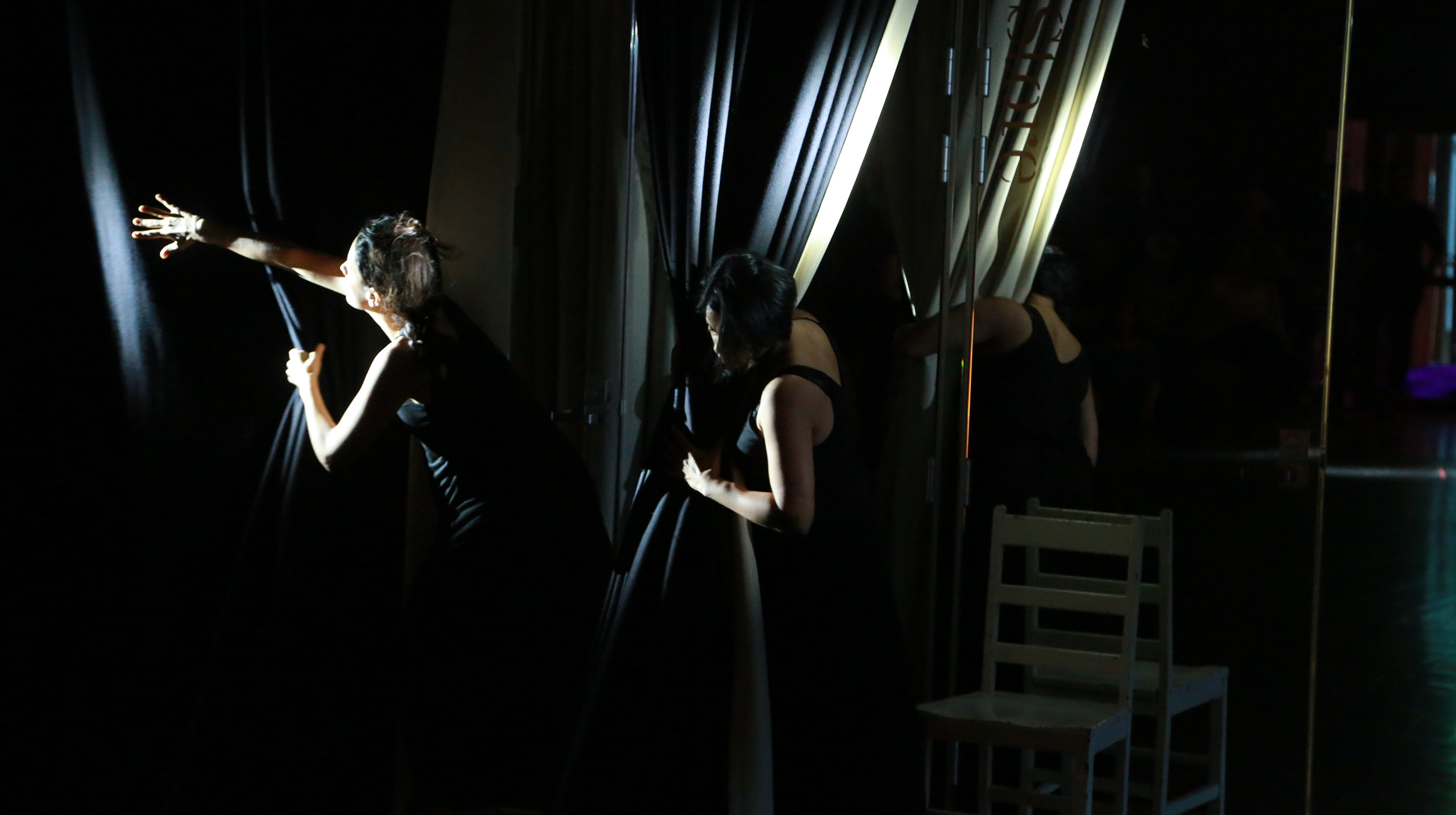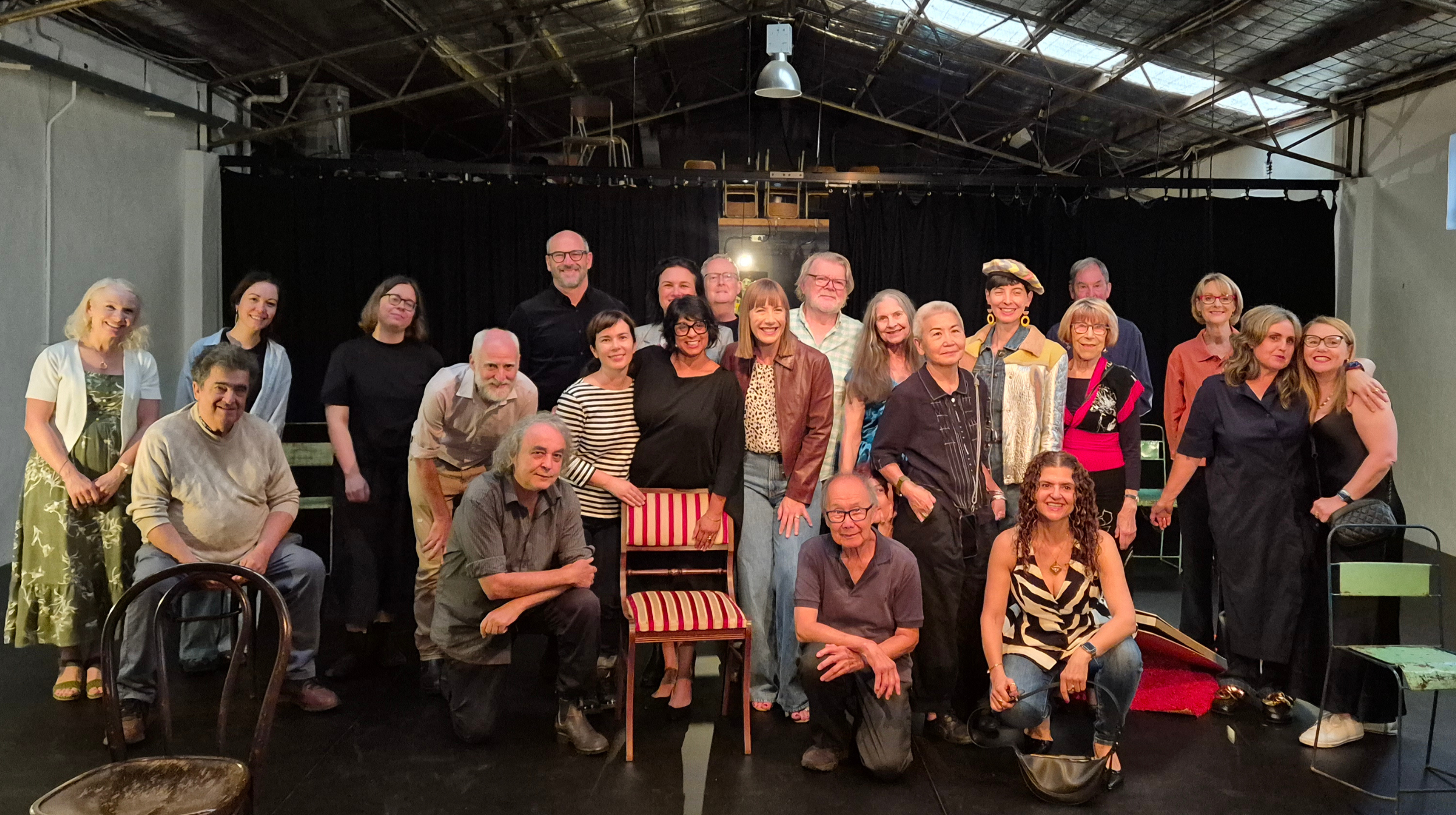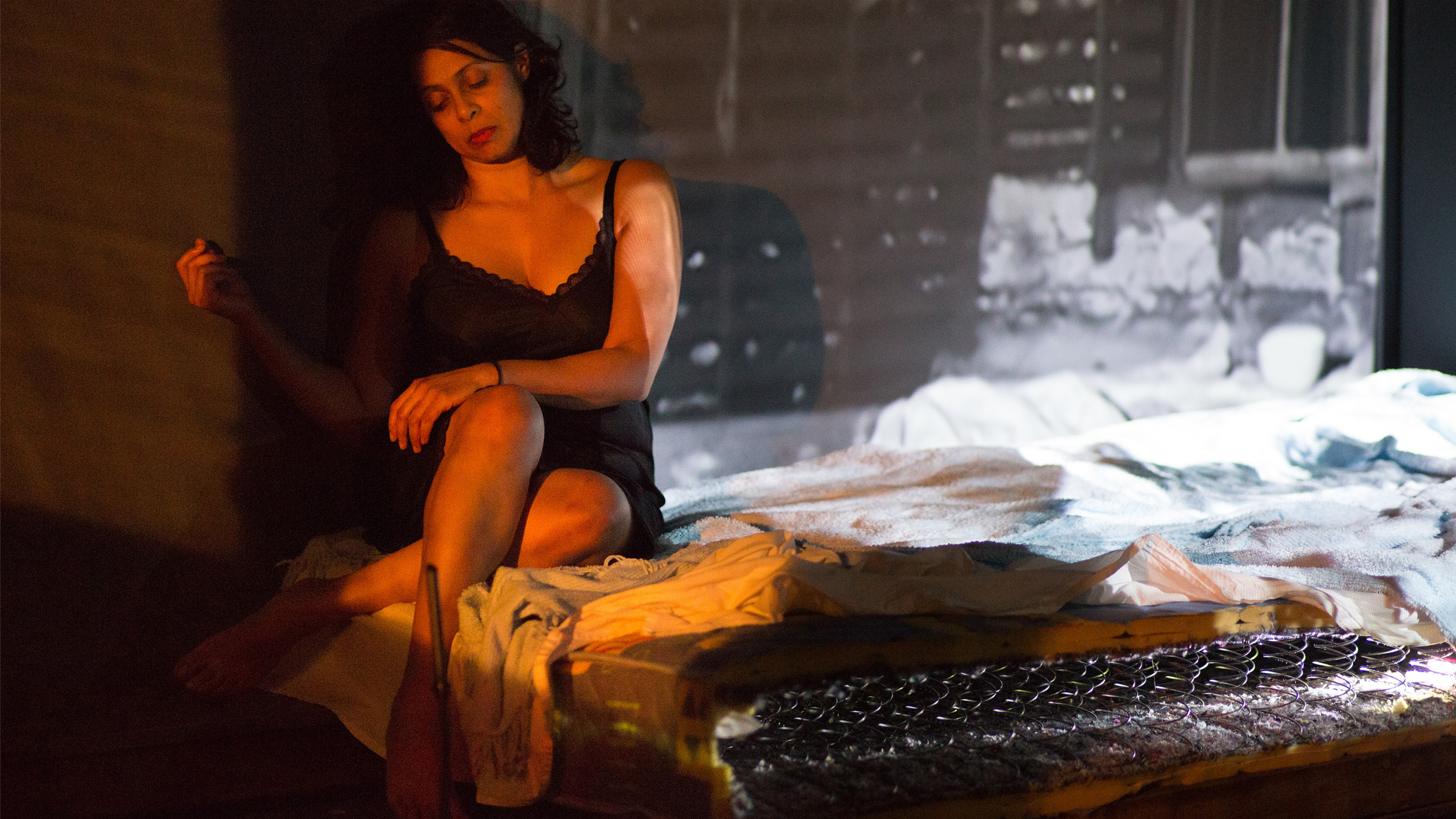
The Philosopher and the Maker
12.12.2017
Reflecting on the creative process of ‘A Requiem for Anastasia’
A conversation between Michelle St Anne and Professor Danielle Celermajer, Department of Sociology and Social Policy at the University of Sydney
A Requiem for Anastasia forms part of the Sydney Social Sciences and Humanities Advanced Research Centre POP-UP RESEARCH LAB, in association with The Living Room Theatre and Brand X.
This showing was part of The Living Room Theatre’s residency at the East Sydney Arts and Community Centre.
Q3 (DC and MSA): Michelle, I’m interested in hearing why you decided to open the creative process so early to an audience. Normally, audiences only get let in on the action when you have already come to a point of a reasonably complete product. During the discussion after the performance, you made the comment that if the show was the baby, what we were seeing was before the first date. Allowing spectators in at that very tender point seems like an usual and courageous act – why did you do it?
Why did I do it? It was an expectation of the residency that I put something preliminary out into the world. It didn’t have to be polished, and it could have been to a handful of people. But I ended up showing a piece of work. I wanted to stitch something together so that the audience would have a sense of what the work was rather than these odd bits that I was kind of flirting with. It was important to me that the audience had an experience.
Having those boundaries put to me for the residency forced me not to be so precious about the material. I didn’t have to explore something to the nth degree, which is something that I would normally do on a rehearsal floor. I would create one image and then massage it until I created the final product. This time it more like ‘yes that is something, that will do…for now’. For example, there is a choreographic scene with two women with netted shrouds. I need to show that this is the experience of many and for me to do this would need a Reichian phasing structure. However for the purposes of the showing I just decided to show the seed and spend the rehearsal period in January to add the layers.
I can then step back and see it as a broad idea. I don’t know what she is or what she looks like, but I have a sense of her. When I talk about showing a work before the first date, I am defining the initial the attractions…The little bits of text or imagery that I like. Similar to being at a party and thinking ‘oh, I like that guy over there.’ What I am doing is flirting with the material – trying to understand the energy behind it. There is something about the material that rubs me in a particular way that I know I can do something with as an artist.
Q2 (MSA to DC): What was it like for you to come in so early?
I’d like to answer that question along two slightly different dimensions – one concerning the creative process itself, and one specifically linked with the subject matter.
On process, like most scholars in the humanities and social sciences, my principal creative process occurs in the medium of solitary writing – although I have also thought and acted in teams. So it was fascinating and illuminating for me to be able to sneak in and witness a collaborative creative process in a different medium, or I should say in different media. Those of us who write all know that you don’t go into the writing knowing what you are going to say, or even what you really think. Words and thoughts are formed together through the process of our hands touching keys on the board or our hand moving the pen. Still, it is almost always a very solitary business, and it happens – if you will – in a type of cocoon we create in our offices, or cafes or wherever we write.
What I had the opportunity to witness here was how your creative process takes place in the in-between-space that arises amongst you as director, the actors and the composer, but also importantly, space, and artefacts or objects and the music.
One of the theorists whose work I have been very influenced by is Bruno Latour – who, along with other Actor Network Theory thinkers insist that all action is the product of a network that comprises human and non-human ‘actants’. All of the actants’ capacity for agency is a network effect, an emergence of the relationships. Creation is not a God-like process, where human agents deploy non-human tools to reveal or enhance their intentions. Being present at this point of your process, this theory came to life in a very vibrant way. Latour speaks about ‘black boxes’ that need to be opened out so we can trace the relationships of creativity. When one only has access to the final product, the interstices of creation have already normally been covered over, but here they were apparet – or at least some of them.
Now on the content – and your specific desire to create a performative piece that engages with the experience of heat waves – I think one of the challenges we all face is how to get it – how do we overcome stock stories and the range of other defences we use (or that use us) against full-body knowledge? The type of performance you create, using music and light and bringing the bodies of the audience into the process pushes us past many of the strategies of abstraction that get in the way of that type of knowing.
In this case, there was something particularly poignant about the fragmented nature of the performance. Precisely because it was not stitched up – and still threw us in raw with detached images – your mama trying to get the microwave to work, the elephant dancing to Barry Manilow, the requiem to the unknown dead – there was a dream-like quality. It felt a little like what Lacan called ‘the Real’ – not yet integrated into the Symbolic order – and for that reason an irritant that we cannot ‘deal with’ by integrating it into a sense-making process. Scholars are very dedicated to making sense of raw data or impression, but sometimes that can be precisely the trap we need to avoid.
Q3 (DC and MSA) What has this process revealed for you? What has come out of it for you in terms of where you move next?
I find showing my final work to be more confronting and challenging than showing my work early. When it comes to showing my final product, people walk away from it thinking it’s done. I guess this is because we are all so used to seeing films and thinking – ‘that’s it’. When an audience thinks that a work is over, it opens space for the final product to be judged – leaving little space for reflection.
Whereas when I am showing a work early as part of my creative process, I find that people engage with it more, and feel like they are a part of the process. They own stakes in the final product. This process is actually a really beautiful way to establish a conversation with my audience, and I think that through including an early showing into the structure of a work, it allows for the full production to expand that ongoing conversation that I have with my audiences.
In answering the second part of your question on what comes next, I first need to figure out how the lines of thought I am working with fit together. I am working with two coinciding landscapes or lines of thought. This line of thought coincides with my personal story, which is the story of my mother – and I think I have realised the frequency that both lines of thought work on.
On the one hand there is the emotional landscape of the personal story I want to share about my mother, and on the other hand, there is the scientific and social science landscape…
which comes from Ollie Jay’s research on heatwaves, and that merges with the information that is coming out of David Schlosberg’s field studies on heat and resilience. Now, I need to figure out how they bleed together – how they dance together.
Where do I move to next? In the coming months, I will be spending some time on the concept of denial surrounding climate change, that was explored in the Norwegian case study in Kari Norgaard’s book Living in Denial. Using Kari’s research, I will create that third frequency, which delves into the experience of denial in the Northern Hemisphere – exploring that sense of ‘the snow not coming’ as a different kind of heat, and comparing it to the Australian context.
Come January, I will work with David Roesner as my dramaturg, who will help me find the rhythm and the pulse of the work through the cutting, shaping and questioning of the work. My time with Roesner will allow me to explore how I apply the framework of Composed Theatre to my work, allowing room for reflection on how to structure the work – helping me compose the sound and image that allows the work to breathe.
Danielle Celermajer is a professor in the Department of Sociology and Social Policy at the University of Sydney, with a specialization in human rights and a particular interest in the structural underpinnings of injustice.
This article contributes to the research of the Anastasia Project and was originally published by the Sydney Environment Institute at the University of Sydney.


